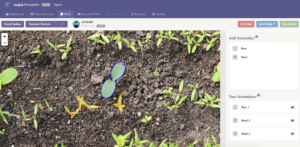AI is still in its infancy in Southeast Asia. While some countries are implementing initiatives to build digital infrastructure and information ecosystems, Singapore, Malaysia and Vietnam are leading the charge, according to McKinsey’s report.
Machine learning, the subset of AI that trains computers to find patterns in large data sets to make inferences and make predictions, is the foundation of most use cases – from chatbots to driverless cars. Decoding an hour of video content can take eight hours or more—while AI software must process millions of data inputs to be effective and reliable.
Malaysia-based Supahands has carved a niche for itself as an end-to-end data analytics partner that provides training data for AI and machine learning. It does this through a busy workforce of 16,000 “SupaAgents” in Southeast Asia, as well as their own proprietary technology to prepare a variety of training datasets.
The in-house software includes SupaAnnotator with customizable labels such as 2D bounding boxes and polygon annotations and SupaAnnotator, a data management platform for image-to-text, video and audio transcription projects, which can define metadata tagging and segmentation.
“Data labeling is an important piece of the puzzle when looking at the machine learning process as a whole, and is one of the most time-consuming and laborious tasks involved in concurrent model development,” said Co-Founder and COO Susian Yeap. “With the more repetitive nature of the tasks, the manpower we have on hand, the infrastructure we can pull together and the overall market opportunity – this was a perfect fit.”
Supahands wants to free up the time of the top AI engineer or data scientist by helping customers deploy their AI models faster. Use cases range from autonomous vehicles to facial gesture recognition and geospatial imaging in a variety of industries, although part of the revenue comes from retail AI and agtech verticals.

“To give an example, we have a retail client that we helped with real-time shelf labeling. “For them, we reviewed over 750,000 images per month with a team of 350 SupaAgents and over 95% image annotation accuracy.”
For all the glitz and glamor associated with AI’s promises, collecting and labeling massive and localized data sets is an essential grunt work in the AI supply chain. But it offers a huge market opportunity. Industry analyst Cognilitica pegs the third-party data identification services market at $1.7 billion in 2019 and is forecast to grow to over $4.1 billion by 2024.
Supahands helped US consumer technology company Ibotta classify 300,000 to 600,000 invoices per month and AI firm Viscovery 200,000 images to classify invoices, saving the client 20-30%. In the year In 2019, an undisclosed Series A funding round led by social venture capital Patamar Capital along with Cradle Seed Ventures for further expansion in the region.
Sexual algorithms
But there’s another side of technology that Supahands doesn’t shy away from. The AI/ML world has a history of not only embedding gender bias in software, but highlighting it in algorithms. While the future of AI is bright, it is especially worrying that women have to struggle not only with everyday sex, but also with technology.
“If five 20-year-old men created a chatbot, the finished chatbot would look like a 20-year-old man,” Yep said. “How could it not be?”
Supahands is setting an example in an industry where professionals are overwhelmingly male. Female employees make up about 50% of the workforce, and this is consistent across the leadership, technology and SupaAgent teams.
“From an AI development perspective, it’s important to recognize the technology provider’s strong tendency to create biased machines and proactively ensure as much variation and diversity as possible in the process,” explains Yap. “We play our part by providing quality training information to our customers as much as possible. In fact, our technology team is 51% female and consists of five different nationalities – an achievement that is rare in the industry.”
Keeping the balance
However, when asked if Supahands hires with the intention of diversity in mind, she replied that they do not. The company emphasizes the importance of hiring people with a different mindset, and with it, those who have different origins in nature, culture, race and gender.
“We don’t just need female engineers and female business managers to increase the balance,” Yep said. “We’re looking for the best engineers and the best designers, and based on these hiring principles and the people who’ve walked through our doors, that’s what our team looks like today.”
For her, this starts with individualism. “It’s really important that women stop labeling ourselves and see ourselves as ‘women in tech,'” she says. “We need to present ourselves as professionals and industry experts – software engineers, data scientists, programmers and CEOs.”




